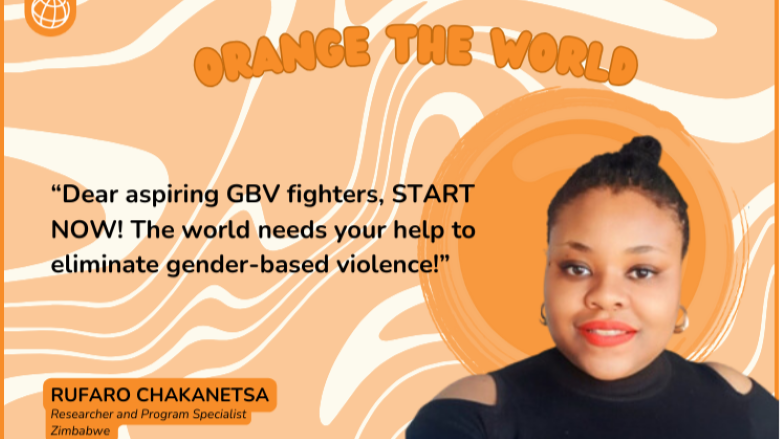
Every day when I was at work, I noticed women with concealed bruises and saw the harassment of young women in public spaces and intimate partner violence cases going unreported that often resulted in someone getting killed. I wanted to help end all this pain caused by gender-based violence (GBV) but I had no idea HOW! I know you feel this pain too and you want to get involved in eliminating GBV but you still have the BUT HOW? A question like the one I had a few years back.
<What’s at stake?
Evidence from global studies shows that almost one in every three women has experienced a form of gender-based violence in their lifetime. If left unaddressed, it severely affects the overall well-being of communities, can result in the loss of lives, and is also a violation of human rights. According to the United Nations Population Fund: “Gender-based violence is an umbrella term for any harmful act that is perpetuated against a person’s will and is based on socially ascribed differences between females and males. It includes acts that inflict physical, sexual or mental harm or suffering, threats of such actions, coercion and other deprivations of liberty.”
As we take part in the 16 days of activism against GBV, I am sharing a few insights that can be useful in kick-starting your activism journey. These tips are based on my community engagement experiences in Zimbabwe. Just to give you the wider context, we reached out to at least 100,000 community members whilst using some of these ideas.
Eliminating GBV requires different interventions. For example, the Global Spotlight Initiative Program on GBV focused on six pillars—laws and policy reforms, strengthening government institutions, prevention strategies, providing high-quality essential services for survivors, improving the quality of data, and building women’s movements. I recommend beginning your advocacy journey with prevention-centered initiatives. Prevention strategies include community-level initiatives, such as mobilizing women, girls, men, and boys for dialogue sessions. Community level interactions help you to gain insider perspectives should you decide to be involved in policy formulation.
GETTING STARTED
Here are a few points to consider before you begin your journey.
1. What problem do you seek to address?
Identify the specific issue you seek to address. For example, our community has a high prevalence rate of forced marriages and intimate partner violence.
2. What solution do you propose for the problem?
This is guided by multiple factors that include your personal strengths or individual capacity, safety, resources available, time, and community preferences. You may want to consider factors such as your ability to facilitate community dialogue sessions, your access to community organizations, and your content creation skills. If you do not have access to a laptop and a stable internet connection, you may opt for in-person engagements.
Using virtual and in-person methods to lower the risk of GBV
Virtual advocacy methods
- Using digital technologies and social media pages like Facebook, Twitter, and LinkedIn.
- Creating engaging content, such as short animation videos, and designing posters, and pamphlets.
- Creating a blog page or podcast.
- Documenting stories of change in your community and sharing them online (with the authors’ consent).
- Volunteering to train behavior change advocates.
- Circulating verified knowledge on gender-based violence. This can include information on helplines and services available in your community.
- Facilitating online radio and television sessions.
In Zimbabwe, we realized that WhatsApp was among the most preferred mobile apps, hence we created the ‘Taking a stand against GBV’ groups’ initiative to train behavior change facilitators and their share knowledge on the pathways available for referral.
In-person advocacy methods
- Facilitating community dialogue sessions on various gender-based violence topics.
- Facilitating trainings for various community groups, such as women, men, community organizations, school children and traditional leaders.
- Distribution of flyers and pamphlets.
- Volunteering with local organizations.
- Advocacy marches.
- Researching and documenting lived experiences.
In Zimbabwe, we use Peace Hut community-based dialogue platforms. A Peace hut is a village meeting place where community members gather to discuss and come up with actionable solutions on addressing GBV. We’ve also adopted the global HeforShe campaign to train men and boys as advocates for change in ending domestic violence and child marriages.
Some DO’s and DON’Ts
| DO’s | DON’Ts |
| Ensure the confidentiality of all the GBV survivors you work with. | Share the personal information of survivors unless they have given you permission. |
| Work with local organizations already working on gender-based violence to build your own capacity to serve survivors. | Engage community members without permission from your local leadership or without support from organizations that already have the approval to assemble people. |
| Read material from verified knowledge sources to build your knowledge. | Create content or facilitate a session on a topic that you have not yet learned enough about. |


Join the Conversation